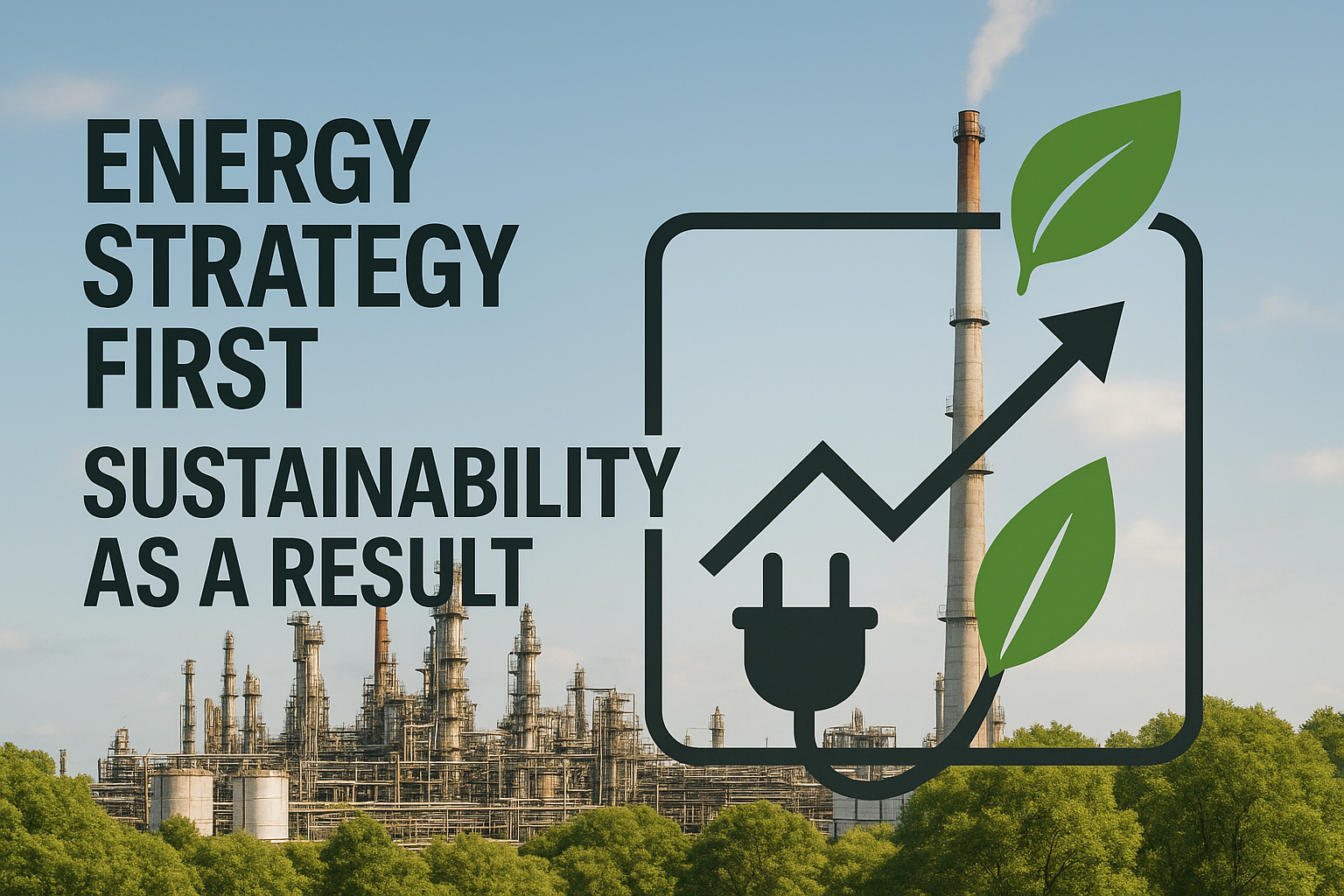Process optimization through advanced AI offers substantial potential for industrial sustainability. According to the World Economic Forum, digital solutions could reduce emissions by 20% by 2050 in the three highest-emitting sectors: energy, materials, and mobility. These intelligent systems can rapidly pay for themselves through significant reductions in energy consumption, carbon costs, and operational waste, delivering measurable improvements to both environmental performance and financial results.
For process industry leaders, global commitments translate to immediate opportunities at your facilities. Today’s industrial AI integrates with existing systems, enabling carbon and cost reductions without the need for new equipment investment.
Optimize Energy Use in Heat-Intensive Units
Furnaces, boilers, and compressors consume energy continuously, creating significant opportunities for optimization. An AI Optimization solution can learn from historical and live temperature, flow, fuel-rate, and ambient data, then suggest new set points to the distributed control system in real-time.
Plants adopting this approach can achieve 15-30% reductions in fuel consumption per unit of output, translating directly into lower Scope 1 emissions and meaningful cost relief.
Starting with a single high-load furnace helps validate this approach. Training the solution on historical data and comparing its recommendations against the daily energy balance provides a foundation for broader implementation.
Monitoring for sensor drift or low-resolution plant data ensures recommendation accuracy through quick calibration or adjustments to higher sampling frequencies. Continuous learning capabilities enable the solution to preserve savings even as feed composition or weather conditions change.
Reduce Flaring and Process Variability
Emergency flares do more than light up the night sky; they torch valuable hydrocarbons and push avoidable CO₂ into the atmosphere, often racking up thousands of dollars in lost product during a single upset.
AI-driven predictive control helps you sidestep those costs by learning the pressure, temperature, and composition patterns that precede a flare, then adjusting setpoints in real time to keep the system balanced.
A solid model draws on high-frequency tags for pressure, flow, and real-time composition as well as inferentials that estimate properties between sample results. Pairing this intelligence with disciplined alarm rationalization limits nuisance trips that can send the plant straight to the flare stack. Integrating machine learning-based equipment health analytics catches bearing or seal issues early, preventing the emergency shutdowns that often trigger greenhouse-gas venting and flaring events.
Improve Feedstock Efficiency and Conversion
Small improvements in conversion quickly add up when you process thousands of tonnes of raw material daily. AI models continuously monitor temperature, composition, and flow data to push each reactor or separator closer to its theoretical optimum. Even a modest lift in yield means converting the same feed into more saleable product, which translates directly into lower Scope 1 emissions and reduced energy costs because less fuel burns per tonne produced.
Lab lag creates the classic blind spot: waiting hours for sample results forces operators to guess at product quality and often apply a giveaway for safety margins. Virtual property estimators—machine-learned inferentials that refresh every few seconds—replace those blind spots with continuous quality insight, allowing intelligent systems to fine-tune conditions before off-spec material forms.
This matters because off-spec runs drive both waste and emissions. Deploying automated quality control has cut off-spec rates, eliminating the need to reprocess or discard product and preventing the extra CO₂ that follow-on cycles would create. Smarter conversion means fewer emissions, less raw material spend, and healthier margins; all without capital upgrades.
Extend Run Length and Cut Downtime Emissions
Machine learning catches the earliest signs of fouling that erode heat-transfer efficiency and drive pressure drops higher. The models learn patterns in differential pressure, temperature approach, and overall heat-transfer coefficients, then recommend incremental adjustments that keep equipment operating within safe limits far longer. Each extra day of runtime avoids the high-carbon surge that happens when a unit cools, vents, and restarts at full fire.
Unplanned shutdowns create even larger spikes. When vibration, casing pressure, or bearing temperatures drift beyond learned boundaries, intelligent systems flag the anomaly hours—or days—before a failure forces an emergency trip.
Plants using this predictive approach cut emergency flares and venting events, directly reducing Scope 1 emissions and maintenance costs. Early warnings built on vibration, pressure, and temperature signatures prevent breakdowns and preserve optimal efficiency throughout extended campaigns.
Identify and Act on Emission Hotspots in Real-Time
A plant-wide dashboard powered by AI shows which units emit the most carbon for every metric tonne of product. Streaming data, utility, and lab data into a single view enables the model to continuously recalculate the kg CO₂ per throughput and highlight outliers that might otherwise go unnoticed.
A simple three-step routine keeps the dashboard actionable:
- Establish a clean baseline of recent operating data first
- Let the system rank every heater, column, and compressor by emission intensity
- Drill down on the worst performers—correlating valve positions, excess oxygen, or steam demand with each CO₂ spike—to expose the exact levers you can adjust today
Quick wins often emerge fast: trimming furnace oxygen, fixing steam leaks, or isolating idling equipment can yield immediate reductions without capital spend. Plant-wide approaches like this can enhance energy efficiency and sharpen ESG reporting accuracy, results that align with findings from both Mitsubishi Electric research and supporting academic studies.
Consider Imubit for Your Fast Lane to Sustainable Profitability
Process plants pursuing both carbon reduction and stronger margins no longer need to choose between the two. Industrial automation delivers measurable improvements in fuel efficiency, electricity consumption, and raw-material utilization within weeks of deployment.
AI, if deployed across energy-intensive sectors, can significantly reduce global emissions. These operational improvements translate directly into lower energy costs, reduced carbon-tax exposure, and protected profit margins.
The path forward requires no massive capital investment in equipment replacement. Start with one high-impact unit where energy waste is most visible—perhaps a furnace with inconsistent fuel consumption or a compressor system running inefficiently. Data-driven models identify the quickest wins, building confidence for broader plant-wide implementation across utilities, production systems, and logistics operations.
For process industry leaders ready to capture both carbon and cost improvements quickly, Imubit’s Closed Loop AI Optimization solution combines deep reinforcement learning with proven domain expertise to accelerate results across your entire operation.




